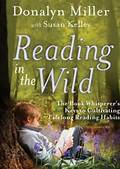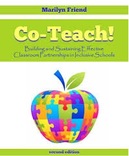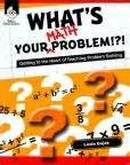
I have a confession to make:
We are always behind in our classroom.
And I'm good with that.
Walk through the halls at my school at any given time during the day, and you are sure to run into someone who is in a hurry. When the bell rings between classes, students and teachers stream out of their rooms and speed down corridors like express trains barreling down tracks. Although the students are expected to walk quietly in straight lines, they are more likely moving about in "buzzing" clusters, stealing those valuable socializing minutes while they can because once all they are quietly tucked away in their next class, it is back down to the serious business of "covering" curriculum. And lots of it.
In our classroom, we have the luxury of being self contained.
This model works extremely well in a co-teaching classroom.
Most of the time, we get to ignore the bell. That's not to say we don't have to manage our time wisely, but we have a
lot more flexibility. Thank goodness.
It seems there is a real contradiction between the amount of curriculum we are expected to "cover" in a school year and the level at which students are expected to master the curriculum covered. Simply disseminating information,
assigning homework, providing a study guide, and administering an assessment doesn't ensure deep, meaningful learning. Students need to be active participants in their learning. They need to be involved in establishing "real world" purpose. They need to activate their prior
knowledge and share their wonders. They need to explore, discover, connect, discuss, create, and revise. They need opportunities to learn in ways that address their learning needs, styles, and preferences. All of this takes time.
Active student engagement + time = deep, meaningful and lasting learning
So in our classroom, we go slow to go fast and some how it all works out in the end.
We value quality over quantity.
We believe less is more.
And therefore, we are always a bit behind.
(But please don't tell anyone I said that.)
We are always behind in our classroom.
And I'm good with that.
Walk through the halls at my school at any given time during the day, and you are sure to run into someone who is in a hurry. When the bell rings between classes, students and teachers stream out of their rooms and speed down corridors like express trains barreling down tracks. Although the students are expected to walk quietly in straight lines, they are more likely moving about in "buzzing" clusters, stealing those valuable socializing minutes while they can because once all they are quietly tucked away in their next class, it is back down to the serious business of "covering" curriculum. And lots of it.
In our classroom, we have the luxury of being self contained.
This model works extremely well in a co-teaching classroom.
Most of the time, we get to ignore the bell. That's not to say we don't have to manage our time wisely, but we have a
lot more flexibility. Thank goodness.
It seems there is a real contradiction between the amount of curriculum we are expected to "cover" in a school year and the level at which students are expected to master the curriculum covered. Simply disseminating information,
assigning homework, providing a study guide, and administering an assessment doesn't ensure deep, meaningful learning. Students need to be active participants in their learning. They need to be involved in establishing "real world" purpose. They need to activate their prior
knowledge and share their wonders. They need to explore, discover, connect, discuss, create, and revise. They need opportunities to learn in ways that address their learning needs, styles, and preferences. All of this takes time.
Active student engagement + time = deep, meaningful and lasting learning
So in our classroom, we go slow to go fast and some how it all works out in the end.
We value quality over quantity.
We believe less is more.
And therefore, we are always a bit behind.
(But please don't tell anyone I said that.)

 RSS Feed
RSS Feed



